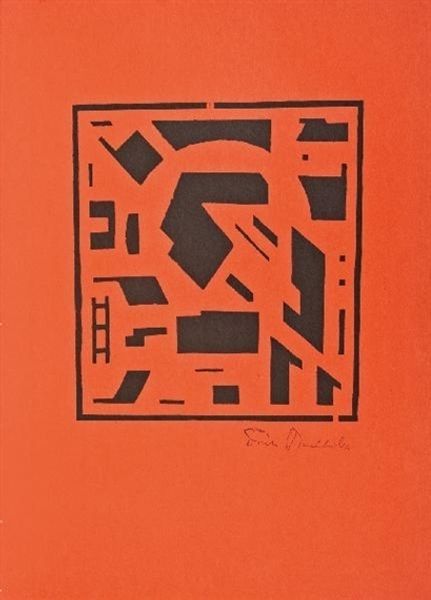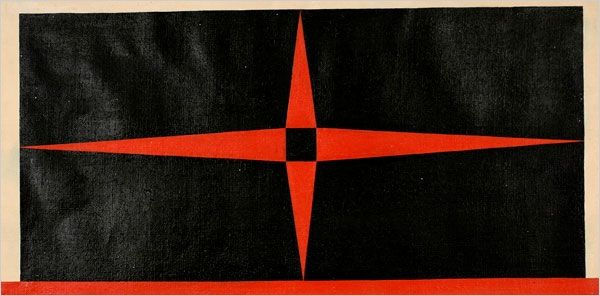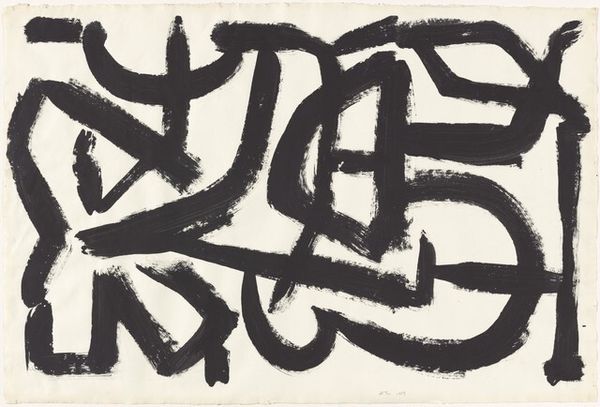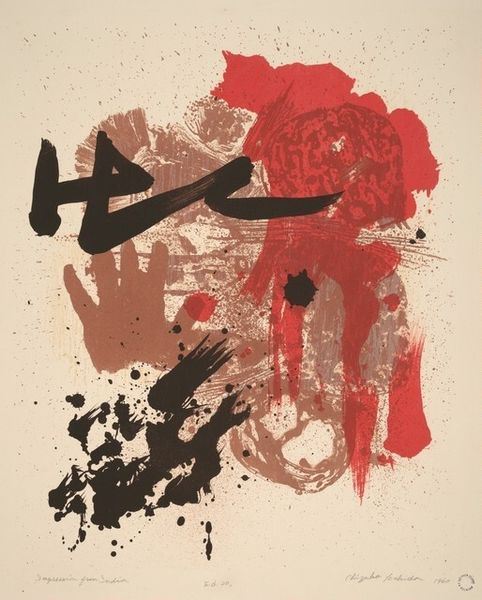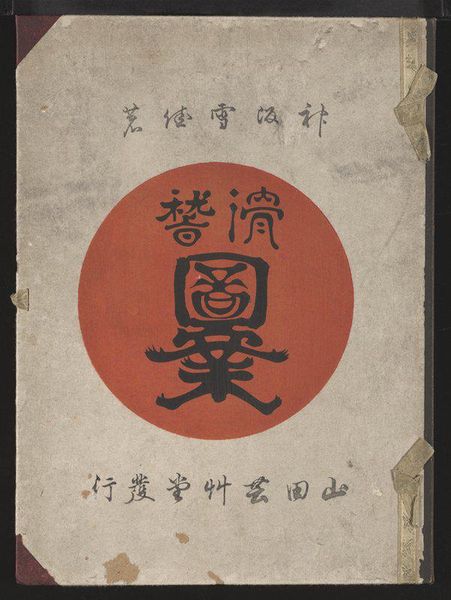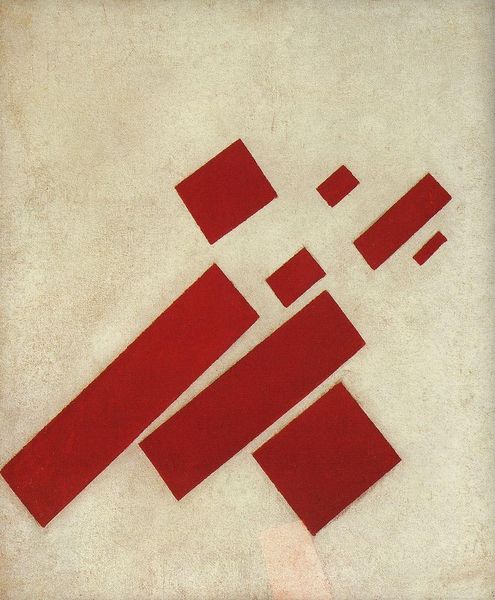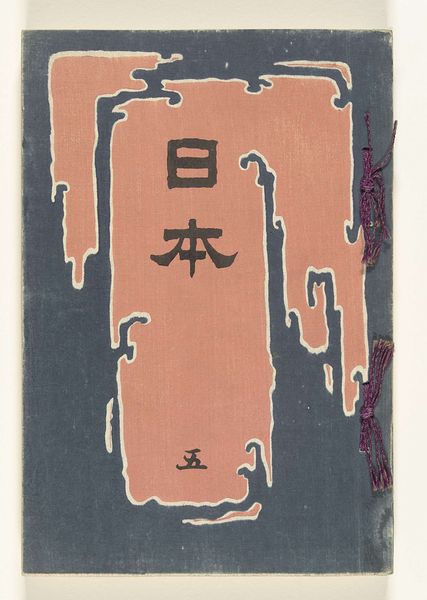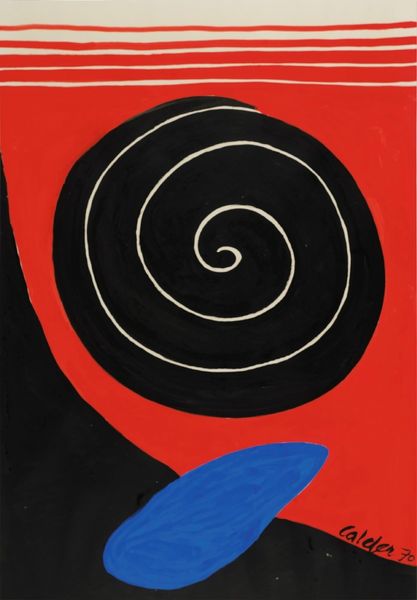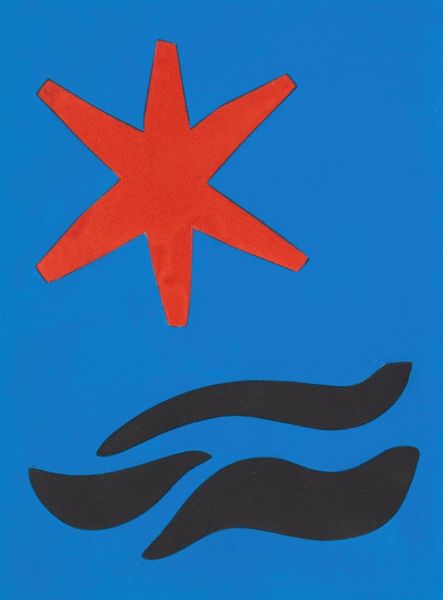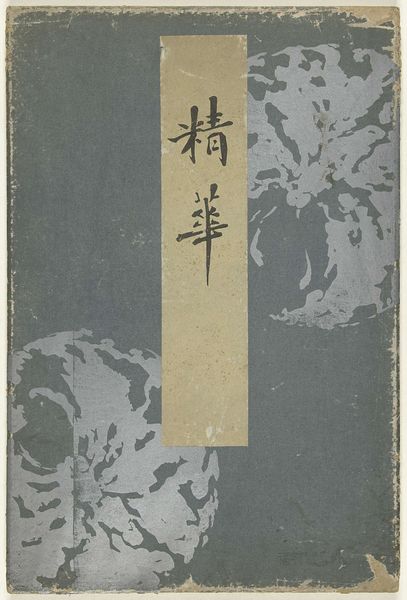
Copyright: Modern Artists: Artvee
Editor: We’re looking at Alexander Calder's "Fêtes #3" from 1971. It features a bold red background with a yellow star and a black spiral. It feels… almost like a flag or an emblem. What do you see in this piece, and what could have inspired him? Curator: What strikes me is the deliberate simplicity. The bold shapes, the primary colors – it echoes the visual language often used in revolutionary posters and propaganda. Think about the historical context: 1971 was a time of significant social and political upheaval. The Vietnam War was raging, civil rights movements were gaining momentum, and there was a global wave of protests and calls for systemic change. Editor: So you think this is some kind of statement? Curator: It's not overt, but Calder was certainly aware of the political climate. These stark geometric forms, almost like coded symbols, could be interpreted as a subtle commentary on power, progress, and the cyclical nature of history. A star, for example, can symbolize hope or aspiration, while a spiral might represent constant change or even turmoil. Editor: Interesting. I guess I was just thinking about the aesthetics, about Color Field painting. Curator: Color Field is part of the story! But it's crucial to ask *why* those aesthetics resonate, and *how* they intersect with broader social narratives. Did Calder choose this visual vocabulary simply for its aesthetic appeal, or was he also using it to tap into a collective consciousness, a shared language of dissent and aspiration? Editor: I never really thought about Calder that way. It’s almost unsettling how much history can be packed into such a seemingly simple composition. Curator: Exactly! Art isn't created in a vacuum. By situating "Fêtes #3" within its historical context, we can uncover deeper layers of meaning and appreciate the artwork not just as a formal arrangement of shapes and colors, but as a reflection of a turbulent era.
Comments
No comments
Be the first to comment and join the conversation on the ultimate creative platform.
